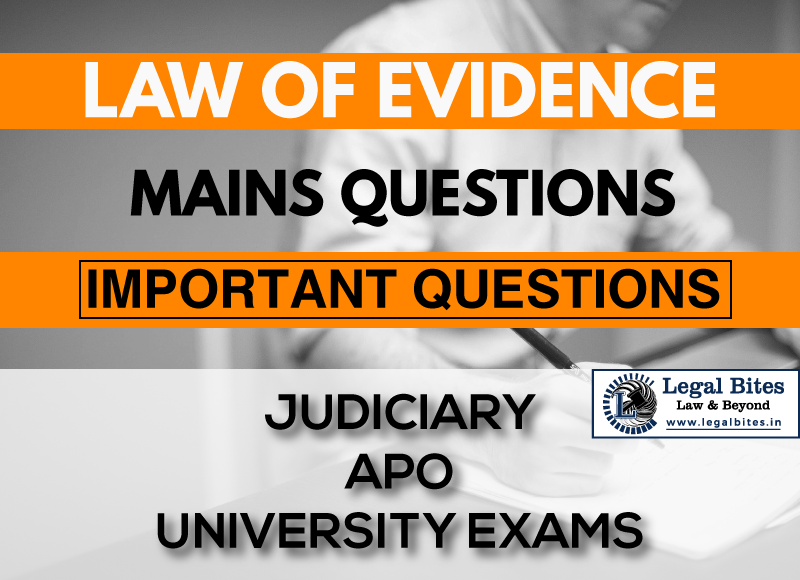A sues B for libel (defamation) contained in a letter forming part of the correspondence. Are the facts of the letters between the parties (not containing the defamatory statements) relating to the subject out of which the libel arose relevant under Section 6? Give reasons.
Question: A sues B for libel (defamation) contained in a letter forming part of the correspondence. Are the facts of the letters between the parties (not containing the defamatory statements) relating to the subject out of which the libel arose relevant under Section 6? Give reasons. Find the answer to the mains question only on Legal Bites. [A… Read More »
;
Question: A sues B for libel (defamation) contained in a letter forming part of the correspondence. Are the facts of the letters between the parties (not containing the defamatory statements) relating to the subject out of which the libel arose relevant under Section 6? Give reasons. Find the answer to the mains question only on Legal Bites. [A sues B for libel (defamation) contained in a letter forming part of the correspondence. Are the facts of the letters between the parties (not...
Question: A sues B for libel (defamation) contained in a letter forming part of the correspondence. Are the facts of the letters between the parties (not containing the defamatory statements) relating to the subject out of which the libel arose relevant under Section 6? Give reasons.
Find the answer to the mains question only on Legal Bites. [A sues B for libel (defamation) contained in a letter forming part of the correspondence. Are the facts of the letters between the parties (not containing the defamatory statements) relating to the subject out of which the libel arose relevant under Section 6? Give reasons.]
Answer
Section 6 of the Indian Evidence Act which provides for relevancy of facts forming part of the same transaction states as Facts which, though not in issue, are so connected with a fact in issue as to form part of the same transaction, are relevant, whether they occurred at the same time and place or at different times and places.
This section admits those facts the admissibility of which comes under the technical expression res gestae [i.e. the things done (including words spoken) in the course of a transaction], but such facts must “form part of the same transaction”.
If facts form part of the transaction which is the subject of inquiry, manifestly evidence of them ought not to be excluded. Every fact which is part of the same transaction as the fact in issue is deemed to be relevant to the fact in issue although it may not be actually in issue, and although if it were not part of the same transaction it might be excluded as hearsay.
The facts of the present case are borrowed from illustration [c] to section 6 of the Indian Evidence act. In this case, A sues B for a libel contained in a letter forming part of a correspondence. Letters between the parties relating to the subject out of whom the libel arose, and forming part of the correspondence in which it is contained, are relevant facts, though they do not contain the label itself.
Important Mains Questions Series for Judiciary, APO & University Exams
- Law of Evidence Mains Questions Series Part-I
- Law of Evidence Mains Questions Series Part-II
- Law of Evidence Mains Questions Series Part-III
- Law of Evidence Mains Questions Series Part-IV
- Law of Evidence Mains Questions Series Part-V
- Law of Evidence Mains Questions Series Part-VI
- Law of Evidence Mains Questions Series Part-VII
- Law of Evidence Mains Questions Series Part-VIII
- Law of Evidence Mains Questions Series Part-IX
- Law of Evidence Mains Questions Series Part-X

